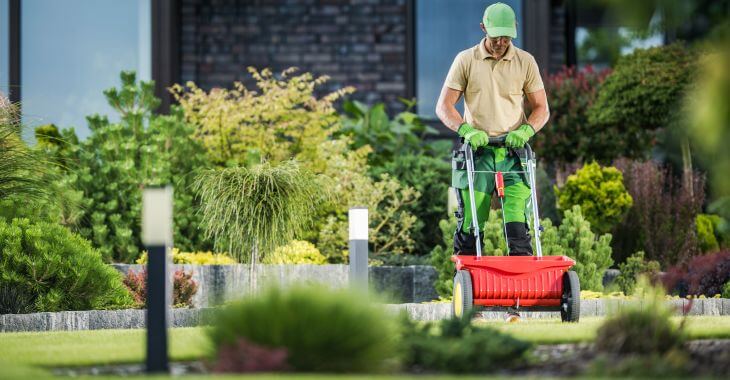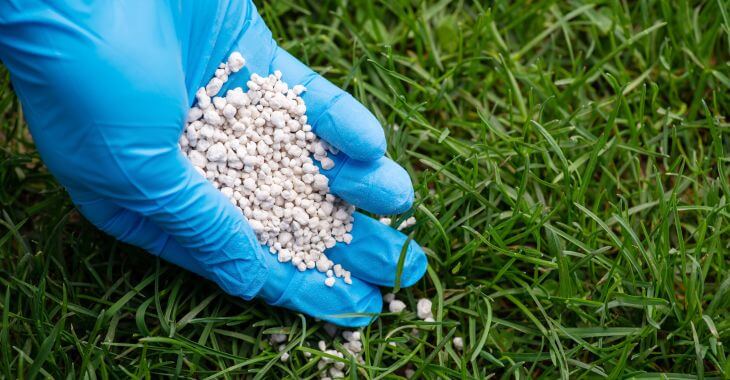How to Tell If Your Lawn Needs Lime

Maintaining a lush, vibrant lawn requires more than just regular watering and mowing. One often overlooked yet crucial aspect of lawn care is ensuring that the soil’s pH level is optimal for healthy grass growth, which requires lime. Here are ways how to tell if your lawn needs lime.
What Is Lime?
Lime is a soil amendment commonly used in gardening and lawn care to adjust soil acidity levels and improve nutrient availability for plants. It is composed of calcium and magnesium carbonates, which help neutralize acidic soils and promote healthy plant growth. But what does lime do for grass?
In this article, we will look at the signs that indicate your lawn may need lime, explore the benefits of lime for grass, and discuss the best practices for applying lime to your lawn, including how much and how often.
Signs Your Lawn Needs Lime
Determining whether your lawn requires lime begins with observing its overall health and appearance. One of the most telltale signs of soil acidity is the presence of moss, weeds, or thin, patchy grass growth. If you are noticing a thinning, unhealthy grass on your lawn, it may be an indication of low lime levels.
Additionally, if your lawn’s soil pH level falls below the optimal range of 6.0 to 7.0, it may benefit from a lime application. Conducting a soil test is the most accurate way to assess your lawn’s pH level and determine if lime is needed or if something else is causing your poor lawn health,
Understanding Lime’s Role in Grass Health
Lime serves as a soil conditioner, primarily by neutralizing soil acidity and raising pH levels. This adjustment allows grass to better absorb essential nutrients, such as nitrogen, phosphorus, and potassium, promoting healthier root development and overall grass growth.
Furthermore, lime helps to improve soil structure and aeration, enhancing water infiltration and reducing compaction. By creating a more hospitable environment for grass roots, lime contributes to a thicker, greener lawn that is more resistant to drought, disease and pests.
When to Apply Lime to Lawn
The timing of lime application is crucial for maximizing its effectiveness and ensuring optimal grass growth. Ideally, lime should be applied during the fall or early spring, when grass is actively growing and soil moisture levels are moderate. These are the best conditions for lime to penetrate the soil.
However, if your lawn exhibits severe symptoms of soil acidity, such as moss proliferation or stunted grass growth, applying lime during the warmer summer season may be necessary to address immediate concerns. Be aware that the application is generally not as effective as in the spring or fall.
Best Practices for Applying Lime
Before applying lime to your lawn, it is essential to determine the appropriate amount based on your soil test results and lawn size. Generally, most lawns require around 40 to 50 pounds of lime per 1,000 square feet for moderate acidity correction. It is important to get enough lime to be effective.
The cost of lime for lawns can vary depending on factors such as the type of lime, the quantity needed, and your location. Generally, agricultural lime, which is commonly used for lawn applications, can range from $20 to $50 per 50-pound bag.
Using a drop spreader or broadcast spreader, evenly distribute the lime across your lawn, taking care to avoid overlapping applications. After application, water your lawn thoroughly to help the lime penetrate the soil and initiate the pH adjustment process.
To keep your lawn healthy, you should monitor your soil to determine if more lime is needed. Repeat soil testing every few years to monitor pH levels and determine if additional lime applications are needed.
How Long Does It Take to See Results?
The time it takes for lime to restore lawn health can vary depending on factors such as soil pH levels, grass type, and environmental conditions. In general, you may start to see improvements in grass health within a few weeks to a few months after applying lime.
However, it can take several months for lime to fully neutralize soil acidity and for the benefits to become apparent in the lawn. Regular soil testing and monitoring can help determine when additional lime applications may be necessary to maintain optimal soil pH levels and promote ongoing lawn health.
Maintaining a healthy, vibrant lawn starts with understanding the importance of soil pH and providing essential nutrients like lime. Incorporating lime into your lawn care routine is a simple yet effective way to achieve a lush, green lawn that enhances the beauty and enjoyment of your outdoor space.

By recognizing the signs that your lawn may need lime and following proper application techniques, you can ensure that your lawn thrives year-round. If you are concerned about your lawn’s health, contact a landscaper to perform soil testing to determine if lime treatment could benefit your lawn.
